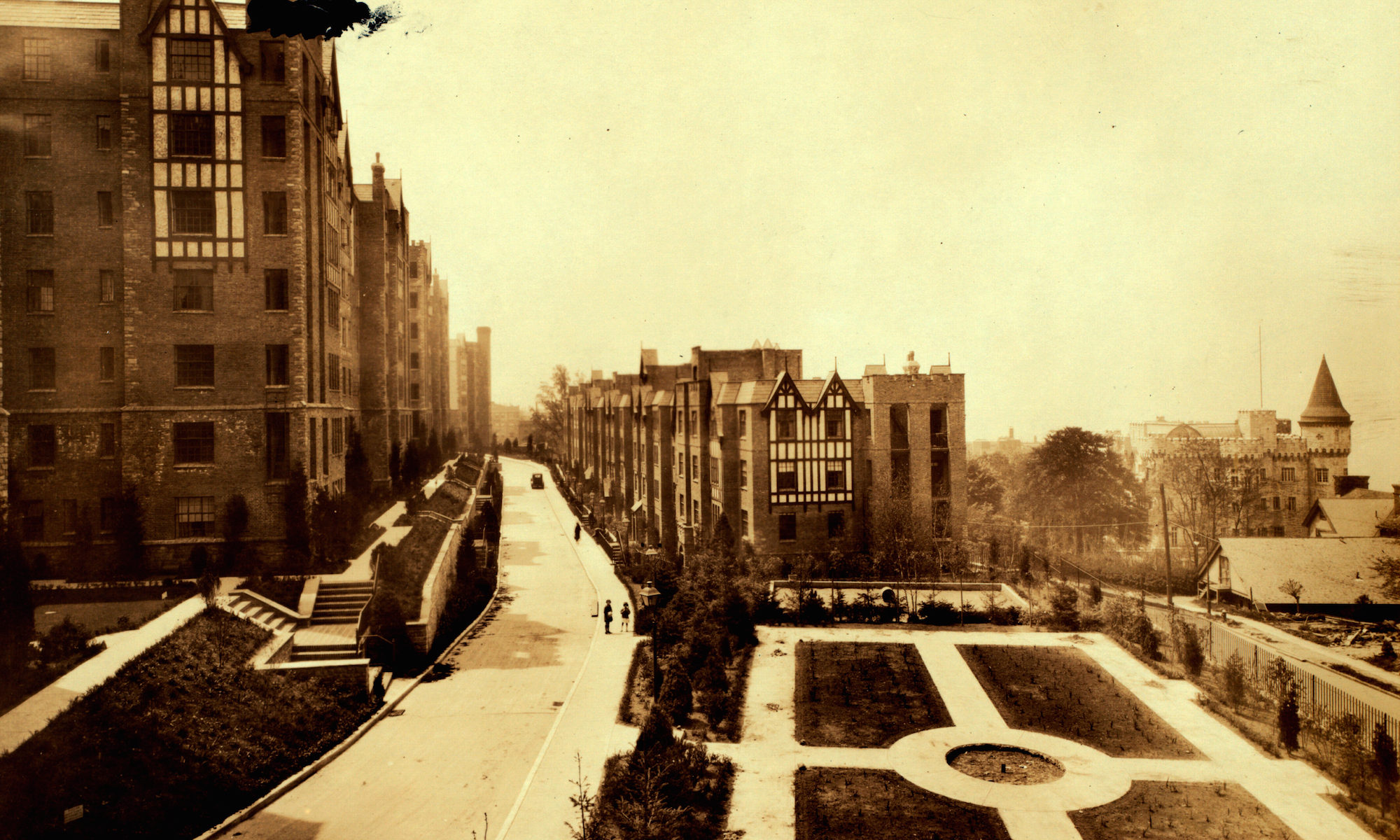Watch “The Paterno Family: Chronicling a New York Real Estate Legacy” video on YouTube
Read ‘The Paterno Brothers & Their Manhattan Apartment Houses‘ Look Book
1925 1172 Park Avenue
Located in Expanded Carnegie Hill Historic District designated 21 December 1993
1172 Park Avenue (cooperative apartment) in Manhattan was built by Michael E. Paterno where Salvatore, Ida, and Helen Cotillo moved from Pelham, the close-in New York suburb. Helen Cotillo married Carlo Paterno, son of Dr. Charles V. Paterno and nephew of Michael E. Paterno, in 1934.
– 1930 Federal Census has Salvatore, Ida, Helen, Hugh Berthold (Ida’s father), and Anna Stahl/Stall (lifelong family maid) living at 1172 Park Avenue (owned, $41,000 value)

1925
564
$800,000.00
PARK AV, 1172-1178 and 93d [93rd] st, 74 E 14-sty bk apt. slag rfg, 105˙90
OWNER / OWNER ADDRESS
(o) 1101 Park Av Corp., Michael E. Paterno, pres / (o) 200 W 72 st COMMENTS
ARCHITECT / ARCHITECT ADDRESS
(a) Rosario Candela / (a) 200 W 72d [72nd] st (source)

Featured in Andrew Alpern’s book The New York Apartment Houses of Rosario Candela and James Carpenter, page 178 – includes 3 pages of floor plans







1172 Park Avenue a/k/a 1172-1178 Park Avenue, 74-76 East 93rd Street
Borough of Manhattan
Tax Map Block/Lot: 1504/40
Date: 1925-26 [NB 564-1925]
Type: Apartment Building
Architect: Rosario Candela
Style/Ornament: Neo-Renaissance
Owner/Developer: 1101 Park Avenue Corp. Number of Stories: 14
This fourteen-story apartment building, located on the southwest corner of Park Avenue and East 93rd Street, has frontages of approximately 100 feet on Park Avenue and 105 feet on East 93rd Street. Designed by noted architect Rosario Candela, it was built in 1925-26 for Michael E. Paterno’s 1101 Park Avenue Corp. and replaced four five-story buildings. As originally laid out, the new building contained twenty-six expansive apartments of eleven or twelve rooms (with four bathrooms) each, which were sold in a cooperative arrangement. The apartments were eventually divided, as evidenced by a proposal in
1965 to reduce the existing fifty-two units by one [ALT 1563-1965]. Also by that year two doctors’ offices had been created in the building. The neo-Renaissance facades consist of a three-story limestone base, composed of two rusticated stories and a smooth-faced transitional story, framed between a granite water table and a dentiled cornice; a tenstory brick midsection surmounted by a stringcourse; and a one-story stone-trimmed brick crown. The terminal cornice features modillions and animal-head spouts. The main entrance is located at the center of the Park Avenue facade; it is set into a molded arched enframement with a carved tympanum. Flanking the main entrance are secondary entrances which have corniced surrounds surmounted by decorated tympana and prominent keystones; in the end bays are window openings in surrounds with
carved heads. Additional surviving historic fabric at the first story includes multi-pane double-hung wood sash windows with iron grilles, paneled wood doors with glazing protected by iron grilles, and iron lamps which flank the main entrance, and (on the East 93rd Street side) a service entrance with a wood frame and multi-pane wood transom. Above the first story, many original six-over-six double-hung wood sash windows survive; some of the replacement windows conform to this pattern. Included on the south
side of the site is an alley spanned by an iron gate with an historic lower section. The exposed west elevation of the building is a brick wall pierced by windows; the exposed south elevation is a brick wall with stone returns and windows resembling those on the facades.
Significant References
New York Public Library, Photographic Views of New York City, 1870s – 1970s (Ann Arbor, 1981), fiche 0951/A4.
Pease & Elliman’s Catalogue of East Side New York Apartment Plans (New York, 1925), 208d.
Real Estate Record & Guide (Mar. 3, 1928), p. 17 (source)
Of significance to the architectural development of New York City are the changes in
plan behind the historically decorated facades of these apartment buildings. Their interior
layouts vary widely in size and comfort. A typically spacious unit at No. 1172 Park Avenue
(1926, Rosario Candela) shared its floor with just one other unit, each having its own elevator core; however, each apartment was arranged with its eleven rooms (and four baths) or twelve rooms (and five baths) strung out along two parallel corridors, one for the tenants and the other for their servants. (source)

















